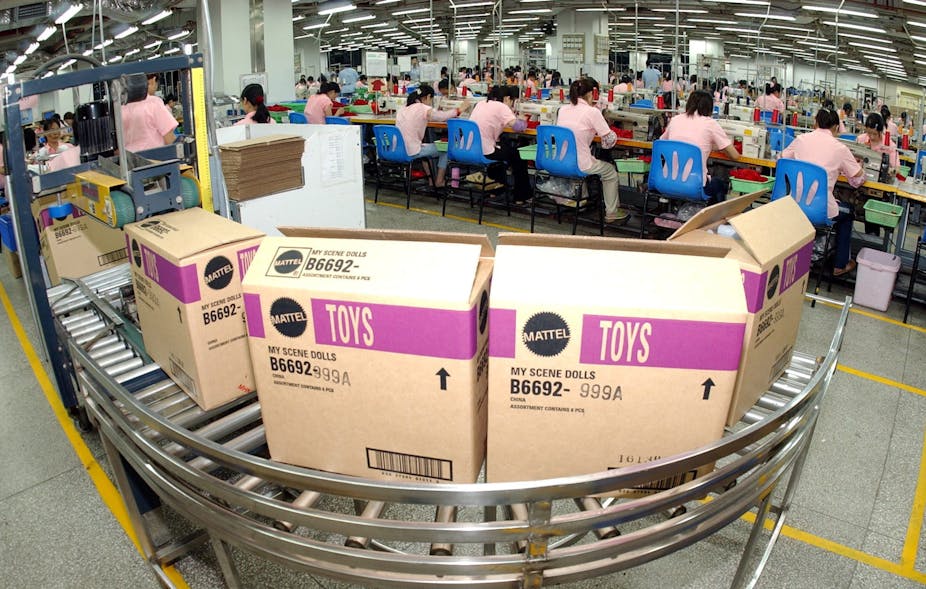AUSTRALIA IN THE ASIAN CENTURY – A series examining Australia’s role in the rapidly transforming Asian region. Delivered in partnership with the Australian government.
In this instalment, Dr Richard Pomfret takes on the thorny issue of how Australia can wield soft power in our region.
The key issues for Australia in the Asian Century will be to find a role in a multipolar world. We must decide how best to use soft power to further our national interests in that world.
For many people today, Asia seems to mean China, just as in the 1980s some Australians’ Asian fears were of Japan as Number One.
Today China and Japan have roughly equal economic weight, and, although China is growing faster, its clout will be balanced by other large Asian economies enjoying catch-up growth, such as India or Indonesia.
Australia has largely seen its role in Asia as responding to economic needs of Japan, China, Korea and ASEAN countries, and remaining on good terms with all. This balancing act will become more complex as Asian rivalries deepen.
Us and them
Outsiders have adopted differing strategies. The Obama administration is re-engaging with Asia-Pacific partners, and this includes security alliances as well as trade initiatives such as pushing the Trans-Pacific Partnership (TPP).
The EU, by contrast, has been almost invisible, especially in recent years, absorbed as it is by internal economic matters.
Australia does not have the military capability of the USA or European powers, but it is a major trading nation in Asia, with important potential roles beyond acting simply as a farm on top of a mine.
Australia, with one foot in the region, has to be proactive.
It is part of the ASEAN network of trade agreements, and is correctly ensuring that it is not left behind as the TPP negotiations have picked up speed.
Soft power projections
How can Australia engage in the increasingly complex supply chains that characterise “Factory Asia”?
Clearly not by competing in standardised manufacturing products or tasks requiring unskilled labour. Australia has to create an environment in which skilled workers (designers, inventors, marketers) can play a role.
The poster children for this approach are Mattel with Barbie Dolls or Apple with iGoods, which are identified as US products, but are manufactured in Asia. These are high-profile examples, yielding high profits, but many other US firms have followed this path (as have firms from small open economies, such as Nokia).
Soft power projection can include political initiatives such as mediation and peacekeeping in trouble spots, or it can take in semi-commercial relations such as education, which includes training future Asian leaders and voters as well as imparting specific skills.
Australia’s advantages as the place for high quality education for Asians include being native speakers of the only pan-Asian language (English), and being acceptable to almost every country as a partner (or place to visit or study). Policy should build on these advantages to maintain a key place in the coming Asian mosaic.
The right policy
What are the policies to further this agenda? To some extent, it is more of the same: continue the substantial trade liberalisation of the past three decades.
Investment liberalisation could be undertaken by raising the threshold for Foreign Investment Review Board reviews, or by working on implementation plans for APEC’s Non-binding Investment Principles.
Education policy should allow schools, colleges and universities to explore alternative offerings for Asian students and ways to enhance those students’ experiences in Australia, while ensuring that erosion of quality does not damage the Australian “brand” in education. It’s not an easy ask, but it that should not be ignored.
Visas for temporary immigration for study or work could be made easier to obtain, and the process made more transparent.
More generally, there is a leadership priority for policymakers to argue that Asia’s increasing economic weight is a great opportunity from which Australia is exceptionally well-placed to benefit, and not a threat as many continue to view Asian immigrants or investors.
Past mistakes
The alternative is to be sidelined from the main arena of global economic growth, relying at most on demand for raw material exports.
If that sounds familiar, it is essentially the path Australia took during the quarter century of global economic growth after 1948. It ended up in a dead-end, requiring a decade of tough and contentious economic reforms in the 1980s.
This time around, we can get it right in the Asian century, but only if we are brave enough.
This is part four of Australia in the Asian Century. You can read other instalments by clicking the links below:
Part One: Want to get ahead this century? Learn an Asian language
Part Two: Australia’s great, untapped resource … Chinese investment
Part Three: Beyond China: Australia and Asia’s northern democracies
Part Five: Australia can lead the fight against Asia’s lifestyle disease epidemic
Part Six: Why Australia needs an Asian Century Institute
Part Seven: Taming the tigers: tourism in Asia to become a two-way street
Part Eight: Australia will need a strong constitution for the Asian Century
Part Nine: A focus on skills will allow Australia to reap fruits of its labour
Part Ten: Engaging with Asia? We’ve been here before
Part Eleven: China, India and Australian gas – who controls energy in the Asian Century?
Part Twelve: Dealing with the threat of deadly viruses from Asia
Part Thirteen: Defence agreements with US harm Australia’s reputation in Asia
Part Fourteen: As Asia faces climate change upheaval, how will Australia respond?
Part Fifteen: How Australia can become Asia’s food bowl

